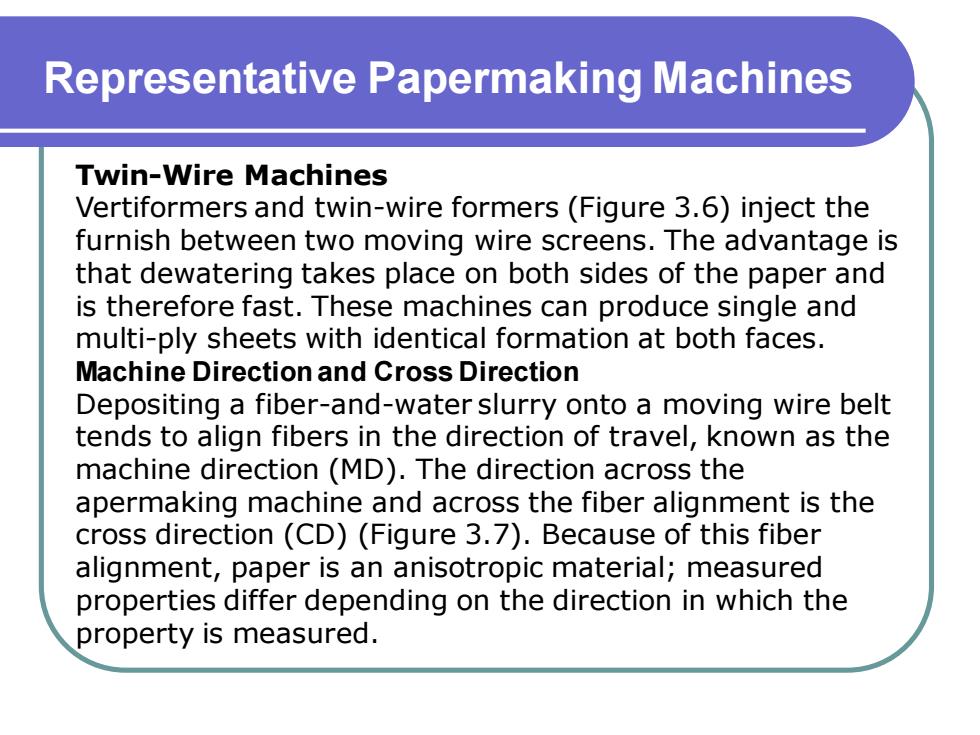正在加载图片...

Representative Papermaking Machines Twin-Wire Machines Vertiformers and twin-wire formers (Figure 3.6) inject the furnish between two moving wire screens. The advantage is that dewatering takes place on both sides of the paper and is therefore fast. These machines can produce single and multi-ply sheets with identical formation at both faces. Machine Direction and Cross Direction Depositing a fiber-and-water slurry onto a moving wire belt tends to align fibers in the direction of travel, known as the machine direction (MD). The direction across the apermaking machine and across the fiber alignment is the cross direction (CD) (Figure 3.7). Because of this fiber alignment, paper is an anisotropic material; measured properties differ depending on the direction in which the property is measured.Representative Papermaking Machines Twin-Wire Machines Vertiformers and twin-wire formers (Figure 3.6) inject the furnish between two moving wire screens. The advantage is that dewatering takes place on both sides of the paper and is therefore fast. These machines can produce single and multi-ply sheets with identical formation at both faces. Machine Direction and Cross Direction Depositing a fiber-and-water slurry onto a moving wire belt tends to align fibers in the direction of travel, known as the machine direction (MD). The direction across the apermaking machine and across the fiber alignment is the cross direction (CD) (Figure 3.7). Because of this fiber alignment, paper is an anisotropic material; measured properties differ depending on the direction in which the property is measured